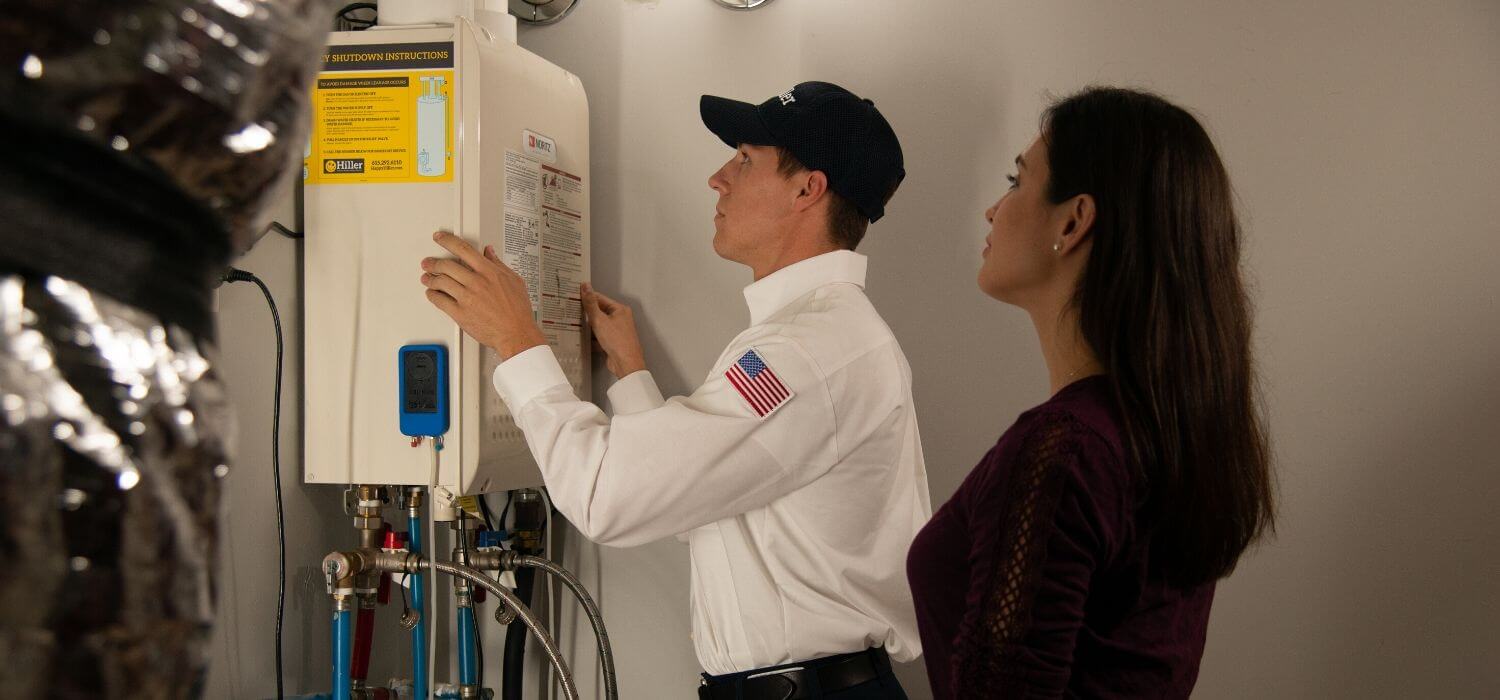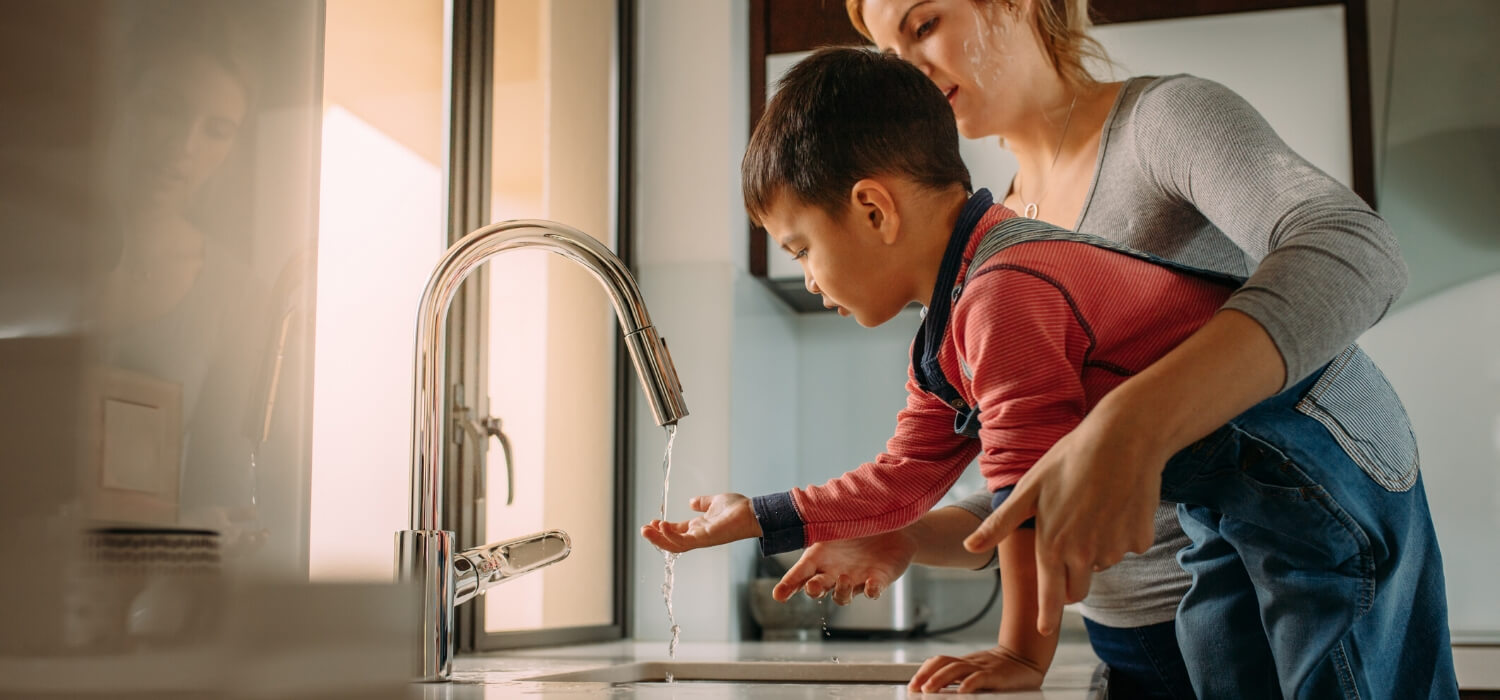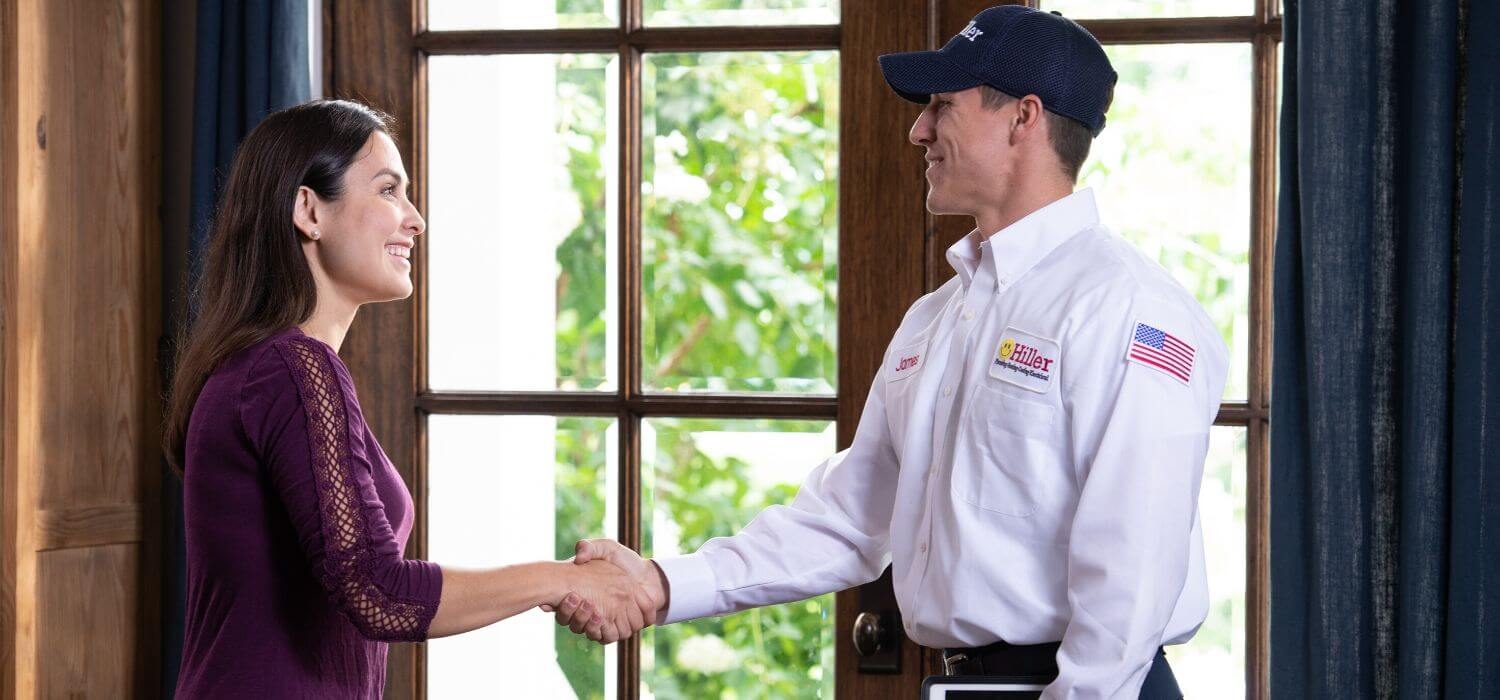What to Do When You Have No Hot Water
Enjoy reading the latest DIY articles and saving money?
Receive our latest helpful hints, tricks and savings, directly to your inbox.
Posted July 1, 2020
So, you have no hot water? Well, of course, you could always do what our ancestors did and boil some stockpots on the stove…
But that would be a tiring, frustrating, and cumbersome process.
You could just call your plumber for water heater repair and have them solve the problem for you–which isn’t a bad idea at all.
But, first, let’s see if we can figure out what might be causing the problem so you know what to suggest to them when they arrive. If you’re interested, follow along with our research.
What Kind of Water-Heating System Do You Have?

Before figuring out what might be wrong with your water-heating system, first, you need to understand the type of water heater you have in your home.
While there are common problems, each type of water heating system also has its specific types of problems. So we’ll look at the different systems first, and then go on to discuss what could be the problem when you have no hot water.
1. Conventional Water Heater with a Storage Tank
This is by far the most common type of water heater. In fact, it’s so popular that it comes in models fueled by electricity, oil, natural gas, and propane–each of which has its unique qualities.
The way a storage-tank water heater works is through a process of continual replenishing with cold water from an external source.
The water is then heated and on standby until needed. Thus, there is a “ready reservoir–from 20 to 80 gallons–of hot water” at all times.
Since storage tank water heaters are still the default, you’ll be reading more about them further along in this article.
2. Tankless Water Heater (On-Demand)
The history of the tankless water heater is intriguing. It wasn’t until the 1890s that the processes of heating and storing hot water were first separated. This is when the concept of the tankless (or “inline”) water heater was introduced.
But it wasn’t until much later–the 1970s, to be precise–that the tankless water heater became a viable option for homeowners. Since tankless water heaters heat water only and as often as needed, they offer a virtually unlimited supply of hot water.
How does this work? Tankless water heaters–which use electricity, natural gas, or propane–heat water as it passes through the unit using a heat exchanger to heat it rapidly.
Tankless water heaters come in both condensing and non-condensing types, with the non-condensing type preferred by consumers since it doesn’t need to vent hot and corrosive steam (requiring the use of lines that are resistant to both).
3. Heat Pump (or “Hybrid”) Water Heater
This type of water heater once was rare in northern parts of the U.S. and pretty much all of Canada since they used to have to operate close to the 40º–90ºF (4.4º–32.2ºC) outdoor temperature range year-round.
However, adaptations have been made to allow a greater range of operating temperatures. For those who can run them where they live, heat pumps are very energy-efficient.
Through some complex processes (sometimes described as “magical” or “mystical”), heat pumps use a combination of electricity and refrigeration technology to heat and cool homes. They heat water using the same technology.
Outdoor air enters a condenser unit outside the house. This is connected by a refrigerant line to an indoor “wall cassette.” The wall cassette allows the use of a thermostat to select the temperature of the air it blows throughout the house.
This is considered geothermal heat since it comes from the ground outdoors during cooler months and the inside air during warmer months.
It’s also possible to connect a “desuperheater,” a secondary heat exchanger that works in sync with the rest of the system and stores heated water in a separate tank (a dedicated tank or a regular storage-tank water heater).
4. Solar Powered Water Heater
There are passive and active varieties of solar water-heating systems–two types of each.
Passive Systems
ICS (Integral Collector Storage)
With an ICS system, hot water from a rooftop collector flows into a winding pipe with a coating that captures heat. The sun does a good deal of the heating work that would be performed by a more conventional water heater’s burner.
Thermosiphon
Contrastingly, with a thermosiphon, water heated by the sun accumulates in a ground-level collector and then rises through tubes, eventually flowing into the top of an insulated storage tank.
Active Systems
These systems use solar energy, but supplement it with electricity.
Active Direct (Open-Loop)
These systems, meant for use in warmer climates, generally use an active direct (or open-loop) system, whereby externally sourced water goes into an insulated storage tank.
A pump takes water from the storage tank and guides it through the solar collector and then back into the tank. Hot water comes from the top of the tank, sometimes passing through another, separate heater as needed.
Active Indirect
The most common cold-weather solar water-heating system currently available is a “closed-loop” heat exchanger system that uses food-safe antifreeze as a warming mechanism for the solar collector.
The heat exchanger heats water from an external source. The device typically is located at the bottom of an insulated storage tank. In some cases, the “storage tank” is simply a standard tanked water heater.
5. Boiler
While not as common in the U.S. as in other countries, some homes do use boilers. Boilers are used primarily for home heating, but some also heat water if the right adaptations have been made. There are a couple of ways this is done.
Tankless Coil
The more common way is with a “tankless coil”–a relatively small heat exchanger that fits into a gas- or oil-fired boiler. For this, the boiler needs to be heated to a fairly high temperature.
You can see that a tankless coil would work well in winter when the boiler is already running and the house needs to be heated. It can be inconvenient in summer, though.
Indirect Water Heater
Also called an “indirect-fired” water heater, this is a fully separate and insulated water tank that is heated using hot water from the boiler. In warmer months, the boiler needs to fire up only occasionally.
What Causes There to Be “No Hot Water”?

Now that we’ve reviewed the various types of water-heating systems, we should get back to the “no hot water” question.
Before calling for help when you find yourself without hot water, check some basic–even seemingly obvious–things first.
For example, could you just be out of hot water? Perhaps you have house guests and, collectively, you’ve depleted the water supply. Check the water temperature again in an hour or so.
Perhaps after your guests leave, you might consider a larger-capacity water heater. If your water heater is old, it might be time for a water heater replacement anyway. Remember, some breakage is due to just plain age and/or wear and tear.
In this section, we’ll go through other possible reasons for there being no hot water in your home.
Is It an Issue Involving the Fuel Source?
While water heaters that use different types of fuel can have similar problems, some problems relate directly to their specific fuels.
Gas
Natural or propane gas is very effective for heating, but also poses some risks–including carbon monoxide poisoning, fire, or explosions.
- Pilot light: Check to see if this is still lit. If not, you need to relight it. Make sure you don’t smell any gas before you do this–or else call a professional.
- Gas leaks: Yes, a gas leak will cause water not to heat. But this might be the least of your concerns. There could be a gas leak. If you smell gas, stop your inspection, leave the house, and call the utility company immediately.
Electric
Electricity is also an effective fuel, though a very different one than gas. Sometimes, the two work together, such as when a pilot light has an electronic ignition.
- Circuit breaker: A water heater, like some other larger, heat-producing appliances, runs on its own electrical circuit. So you might not have noticed that the breaker was tripped. Reset it and see if that fixes the problem. If not, call an electrician.
- A heating element isn’t working: You will need to have the heating element replaced.
There are all problems directly connected to fuel type. Other problems might be indirectly related.
Is It Another Faulty Part?
Most waters heater aren’t complicated devices. It’s unlikely that most parts in any of the more common water-heating systems would lead to the loss of hot water altogether.
(Newer types of systems might still be working out some bugs, of course.)
What’s more likely is for a failing part to gradually reduce the amount of hot water available at any given time. Most of us have experienced this. We’ll discuss this scenario next.
What if the Water Is Heating but Isn’t Hot Enough?

Surprisingly, there seem to be more causes for water not fully heating in a water heater than not heating at all. Here are some of the possible causes or remedies for a “warm water problem”:
Check the Thermostat
The upper thermostat on an electric water heater actually controls both the upper and lower heating elements. This causes the absence of hot water altogether.
The lower thermostat controls only the lower heating element so if it fails, but the upper thermostat is still functioning, the water will simply not get hot enough. That thermostat will need to be replaced.
If It’s a Gas Water Heater, Inspect the Burner
Sediment builds up on a gas water heater’s burner and can prevent the water from heating correctly. This can get a bit complicated, though.
It should be pointed out that, along with the burner itself, the burner assembly contains the thermocouple, the main orifice, the main gas supply tube, the pilot burner, the pilot orifice, and the pilot burner gas supply.
Each of these parts should work properly and be free of dirt; otherwise, the burner won’t light or its performance will be limited.
And since the gas burner is part of the burner assembly, if it’s not functioning properly, the whole assembly should be checked, perhaps even replaced. You should check with a professional before doing the replacement, though.
A Broken Dip Tube
The dip tube brings cold water into the water heater tank. A fully functional dip tube sends cold water directly to the bottom of the tank where it can heat quickly and easily.
A broken dip tube, however, leaves cold water at the top of the tank. The top is also the place from which hot water flows out into your home. Not surprisingly, hot water mixed with cold leaves water from the faucets lukewarm at best.
Sediment Build-Up
Along with the entering water comes debris and mineral sediment (scale). Most of this will settle at the bottom of the tank (where most burners are located) as it builds up. Thus, it prevents more and more of the heat from reaching the water.
Loose or Faulty Wiring
Loose connections or shorts in the wiring of an electric water heater can cause the unit to malfunction. You should turn off power to the water heater and confirm that all connections are tight and free of corrosion. If they are not, call an electrician.
Leaking Tank
Among other concerns, a leak in the tank might prevent water from reaching the desired temperature. Leaking tanks can also cause water damage, short circuits, or even fires. Replacing the water heater is the only remedy in this case.
Next Steps

Having no hot water can be maddening, but we suppose it’s better than having no water (or heat or electricity…) at all. As they say, “stuff” happens.
The average water heater has a lifespan of 8-12 years, so if it’s been that long, it might be time to replace the unit–whether due to sediment build-up, worn-out parts, or simply because your water needs have outgrown the tank size.
The average cost of replacing a storage-tank water heater (unit plus labor) is between $1,100 and $1,500 depending on the model. These tend to be durable, though, and generally require less maintenance than tankless models.
Tankless models cost more upfront (unit plus installation) but might cost less to run due to their efficiency–provided they are maintained meticulously.
Another option might be an electric heat pump, a water-heating system that has undergone some improvements in recent years, including adaptations for use in colder climates, according to Consumer Reports.
Whether you are interested in one of these or another option, when you decide to replace your water-heating system, let us know. We’re always happy to have your business and will do all we can to take care of your needs.
 Daily Promotion
Daily Promotion
$500 Off Tankless Water Heater
Upgrade your comfort and give back this season.
Get Promotion